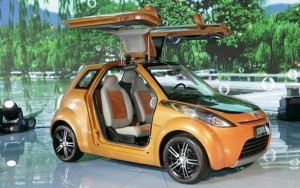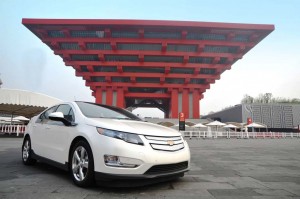
Geely - its IG Concept shown here - is considered one of the likely winners in a shake-out of Chinese domestic automakers.
The long-awaited consolidation of the Chinese auto industry is on hold.
While foreign brands, like Buick, Volkswagen and Toyota, may get much of the attention, there are hundreds of smaller, domestic automakers vying for attention and the dollars of China’s new automotive buying class.
Government leaders – along with those foreign makers and industry analysts — have been hoping to see a shake-out of some of the least viable of those home-grown brands. But like the bumblebee, the structurally unwieldy and inefficient Chinese auto industry continues to fly.
The fact is the boom in car sales over the last three years has bolstered the cash flow of smaller, weaker companies that have blossomed over the years and which continue to sell cars and trucks in sufficient numbers to continue to operate, according to western executives familiar with the rapid growth of the Chinese market. None of the smaller companies have more than 2% to 3% of the market but with Chinese sales topping 18 million last year, and expected to surge past 20 million in 2011, the volume is sufficient to stay in business.
In addition, over-production by the smaller, indigenous companies has helped keep down the price of new vehicles in second and third-tier Chinese cities, as well as in rural areas where the boom in vehicle sales has just begun picking up momentum over the past couple of years.
Michael Dunne, president of the Hong Kong-based Dunne & Company, notes there is no equivalent of Detroit in China to serve as the industry’s center of gravity. Instead there are at least 10 different cities with substantial vehicle production, he noted.
In addition, since the boom in Chinese vehicle sales got underway the industry has never been through a downturn. Instead car sales keep rising, year after year, at double-digit rates. In the rest of the world, recessions have traditionally spurred consolidation, so without a downturn, the incentives that would normally expedite a consolidation have been lacking, Dunne said.
The very regional nature of the Chinese industry also means carmakers’ sales are concentrated around provincial bases – much the way Europe long operated. Even Shanghai Automotive Industry Corp., or SAIC, General Motors partner and perhaps China’s fastest growing automaker, has its principal market in the populous Yangtze River Valley, says Kevin Wale, president of GM China.
Chinese car sales, which have nearly tripled since 2006, have changed the nature of the car business. Where Chinese automakers were once considered an export threat to Western markets, the energy is now concentrated on China’s rapid internal growth. Any talk of exports is limited, and largely targets market closer to home in southeast and central Asia.
Some consolidation has begun taking place. Changan, Ford’s principal partner and the arch competitor of SGM’s Wuling brand, has acquired a couple of smaller vehicle builders to bolster its business, creating some intense competition in rural China.
But Huang Xing, chairman of the China Auto Parts & Accessories Corp., a state owned enterprise with an estimated $30 billion dollars in revenue, said during a recent visit to Detroit that consolidation of the Chinese industry has gone relatively slowly.
Nevertheless, Huang noted China has 100 automakers now but the total number should drop to “50 or 60” over the next five years. The top 10 already account for more than 80% of the market, and China would like to see the top 10 shrink to just six in the future, Huang said.
Huang also said he expects sales of new vehicles should jump another 10% this year and waved off suggestion of a possible downturn after sales of more than 18.2 million units in 2010.
“I definitely see more growth,” Huang said comparing the growth in China’s demand for vehicles to the growth of a child. “It’s just like you can’t stop a teenagers growth,” he said, adding China has more than 150 million motor motorcycle riders and many of them will buy cars over the next decade.

